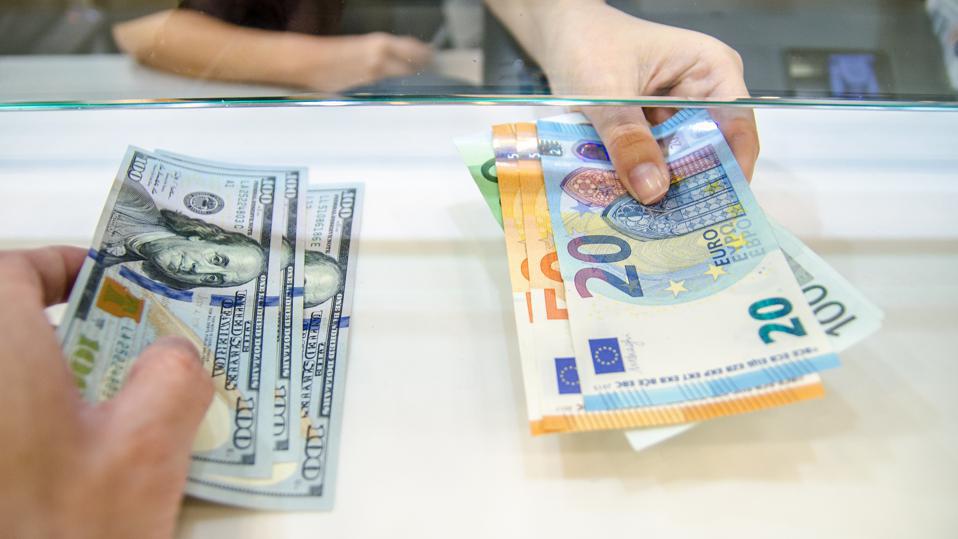More margin for FX movement
At the start of this year, many analysts expected euro/dollar would trade up from its opening level of 1.06 to around 1.10 in mid-year and then on to 1.15 by the end of 2023. So far only the first half of this story has been correct.

The euro did rise to around 1.10 by the end of June but a further rise to the Standard Bank’s original 1.15 year-end target looks unlikely.
>> Debt woes for the US dollar
The euro did rise to around 1.10 by the end of June but a further rise to the Standard Bank’s original 1.15 year-end target looks unlikely. Indeed, its view now is that euro/dollar will end the year around 1.05. What’s changed?
The first thing to say, of course, is that euro/dollar has not really moved very much at all this year with the 1.05-1.10 range capturing just about all the activity in the currency. The Standard Bank’s call for the euro to push on to 1.15 by the end of 2023 was based largely on the view we took at the start of the year that the narrative about Fed policy would change late this year. But that’s not likely to happen; rates are more likely to go up than go down through the remainder of this year.
Even though a hike is possible we are not predicting significant dollar strength from here because any rate hike now would still be a late-cycle rise and these rarely produce much more currency strength. It is the rate changes early in the cycle that tend to create the most bang for the buck. Indeed, that’s why we have been assuming that the next significant move in euro/dollar will be a rally as the Fed clears the decks to make its first cut.
But while we had thought that this could happen in the latter stages of 2023, it now looks as if the earliest the Fed’s narrative will move towards policy easing will be the spring of next year with rate cuts unlikely until the second half of 2024. While we still expect this transition from monetary policy stringency to future rate cuts to lower the dollar against the euro, there is an important caveat. It is that Fed rate cuts stimulate positive financial market sentiment as reflected in rising asset prices such as stocks and bonds.
“If rate cuts occur in some kind of panic, as economies implode and financial asset prices crash, we can only expect the dollar to rise further, even if the scale of Fed rate cuts is much larger than that seen in the, more optimistic, first scenario. We have always felt that this first scenario is the more likely one and, despite some strains, particularly the more recent rise in long-term bond prices, this script has played out. However, the longer the Fed – and other central banks – maintain high rates, the greater the danger that the second scenario starts to develop whereby persistent strains caused by high real yields decimate economies and decimate asset prices such as stocks”, said Mr. Steve Barrow, Head of Standard Bank G10 Strategy.
>> Will the US dollar see a sharp surge like in the 1980s?
In other words, the longer it takes the first – bearish dollar – scenario to materialise, the greater the risk that the second – bullish dollar – scenario comes to pass. This is part of the reason why Mr. Steve Barrow has scaled back his longer-term forecasts for euro/dollar.
There is another issue, besides Fed policy, that looks as if it will be crucial to the longer-term performance of euro/dollar. It is dollar/yen. For it is the yen that’s been the biggest mover this year. This relates not just to the weakness of the yen against the dollar which we’ve seen in recent years but also the sharp recovery for the yen following the BoJ’s intervention a year ago, which appeared to lower the dollar against other currencies as well – including the euro. Should the BoJ intervene again we could see the dollar slip against the euro as well as the yen. But we would not put too much emphasis on this as a route to long-lived dollar weakness.
Instead, the route to dollar/yen weakness is in a pincer movement of rate cuts in the US and rate hikes in Japan; something that could clearly happen next year. Should it do so, and also occur within the context of stable-to-stronger financial asset prices in Japan, then we’d expect some of this yen strength against the dollar to spillover to euro strength against the dollar as well. But, here too, we also have to bear in mind that the longer the BoJ resists rate hikes, the greater the risk that the ultimate reaction in the financial markets is a negative one, not a positive one and, if that happens it would probably lift the dollar some more, not provoke a sustained bout of weakness.








